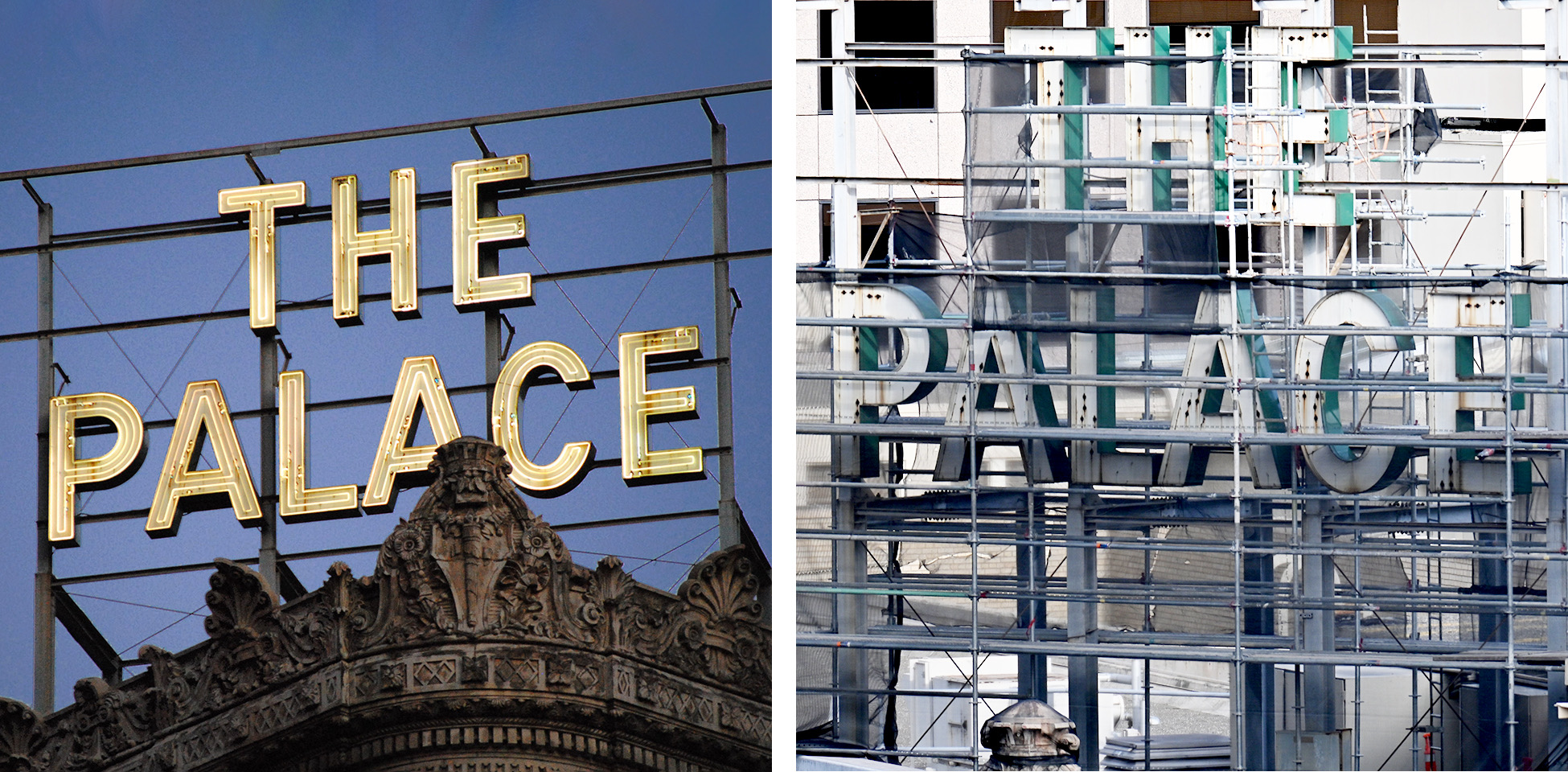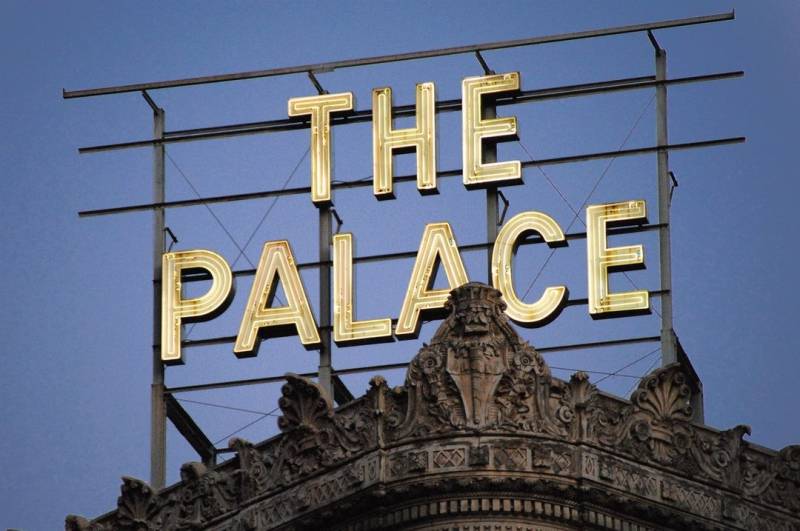After arguing their case at the end of a marathon five-hour hearing on March 20, neon aficionados will have to wait until April 3 for San Francisco’s Historic Preservation Commission to vote on the future of the Palace Hotel’s iconic neon signs.
The hotel received approval in November 2023 to replace the glass tubes of its two “The Palace” signs with “simulated neon” LED lighting, as noted in January by San Francisco Chronicle urban design critic John Knight. But Randall Ann Homan and Al Barna of San Francisco Neon, a nonprofit that leads neon walking tours, questioned why the building’s owner had seemingly received an over-the-counter permit without a hearing.
They raised the point with Supervisor Aaron Peskin, and on March 20, the matter came before the Historic Preservation Commission, along with 211 letters from the public urging the city to prevent the removal of the sign’s neon elements. Barna and four others spoke at the hearing against the LED replacements.
The commission did not hear any in-person comment or receive any letters in favor of the proposed LED lighting. With time running short, the vote was delayed until the next meeting.
“It’s not only San Franciscans,” Barna says. “We know that people wrote in from Chicago and Denver, Los Angeles, New York City. If you’re interested in neon, this has made national news.”

The hotel sits outside the Tenderloin Neon Special Sign District, which was established in 2022 to make it easier to erect new neon signs and repair existing ones. Appreciation of the value of historical signs seems to be on the rise — Chicago passed an ordinance last summer to help preserve signs and murals that are at least 30 years old.


